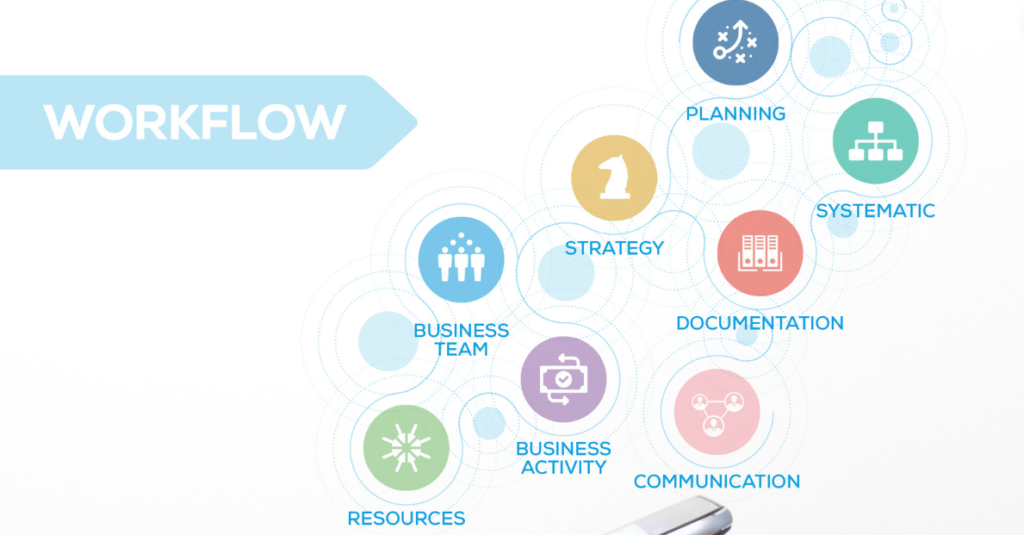- By Write RN
Discover how workflow optimization can transform your content marketing strategy. By streamlining processes, you can boost content output and enhance audience engagement. Learn practical steps, tools, and best practices to optimize workflows and achieve significant marketing results.
In the fast-paced world of content marketing, efficiency and engagement are crucial. Today, we’re diving into a topic that can transform your content strategy: workflow optimization. Our key message is clear—workflow optimization can significantly enhance content output and engagement, leading to better marketing results. Our goal is to educate you on how optimizing your workflows can elevate your content game.
Understanding Workflow Optimization
What is Workflow Optimization?
Workflow optimization involves refining your processes to maximize efficiency and effectiveness. In content marketing, this means streamlining how content is planned, created, reviewed, and published to save time and improve quality.
Why is Workflow Optimization Important in Content Marketing?
Workflow optimization is vital because it helps content teams manage their tasks more efficiently, reduces bottlenecks, and ensures a consistent output of high-quality content. By optimizing workflows, content marketing managers can focus more on strategic planning and less on process management.
Benefits of Workflow Optimization on Content Output
Increased Efficiency and Productivity
When workflows are optimized, content teams can work more quickly and with fewer interruptions. This means more content gets created in less time, without sacrificing quality.
Improved Content Quality and Consistency
Optimized workflows ensure that all team members are on the same page, adhering to the same standards and processes. This results in more consistent and high-quality content.
Examples and Case Studies
Consider a nursing education company that implemented workflow optimization. They needed a lot of content in a short period of time in order to meet a deadline. Write RN provided 30 well-trained writers, writing approximately 5 courses a week! Their engagement rates also improved, thanks to the consistent and high-quality output that kept their audience coming back for more.
Enhancing Engagement Through Workflow Optimization
How Streamlined Workflows Can Lead to Better Audience Engagement
A well-optimized workflow allows for more time to be spent on creating engaging content that resonates with your audience. When your team isn’t bogged down by inefficiencies, they can focus on creativity and strategy.
Metrics to Measure Engagement Improvements
Look at metrics such as time on page, social shares, comments, and conversion rates. These indicators can help you gauge whether your optimized workflows are positively impacting audience engagement.
Real-World Examples
After optimizing their workflows, a travel nurse company noticed a 6x growth in content engagement. By consistently delivering high-quality content, they built stronger relationships with their audience.
Steps to Implement Workflow Optimization in Content Marketing
Step-by-Step Guide to Optimizing Workflows
- Analyze Current Workflows: Identify bottlenecks and inefficiencies.
- Set Clear Goals: Determine what you want to achieve with optimization.
- Choose the Right Tools: Select tools that facilitate workflow management.
- Implement Changes: Make the necessary adjustments to your processes.
- Monitor and Adjust: Continuously assess and refine your workflows.
Tools and Software Recommendations
Consider tools like ClickUp for task management, Grammarly for content editing, and Hootsuite for social media scheduling. These tools can significantly enhance your workflow efficiency.
Best Practices and Tips
- Regularly review and update your workflows.
- Foster open communication among team members.
- Use automation where possible to save time on repetitive tasks.
Common Challenges and Solutions
Identifying and Addressing Potential Roadblocks
Common challenges include resistance to change, lack of proper tools, and unclear processes. Address these by involving your team in the optimization process, investing in the right tools, and clearly documenting new workflows.
Solutions for Common Workflow Optimization Issues
- Resistance to Change: Provide training and highlight the benefits.
- Lack of Tools: Invest in user-friendly, efficient tools.
- Unclear Processes: Clearly define and document each step of your workflow.
To recap, workflow optimization is a powerful strategy for content marketing managers. By enhancing efficiency and improving engagement, optimized workflows can lead to significant marketing results. Now is the time to start optimizing your workflows and watch your content strategy soar.
FAQs: Workflow Optimization for Content Marketing Managers
1. What is workflow optimization in content marketing?
Workflow optimization involves refining your processes to maximize efficiency and effectiveness in content creation and distribution.
2. How can workflow optimization improve content output?
By streamlining processes, you can produce more content in less time without sacrificing quality.
3. What tools are best for workflow optimization?
Tools like ClickUp, Grammarly, and Hootsuite are great for managing tasks, editing content, and scheduling social media posts.
4. How do I measure the success of my workflow optimization efforts?
Track metrics such as content production rate, engagement rates, and overall efficiency improvements.
5. What are common challenges in workflow optimization and how can I overcome them?
Challenges include resistance to change and lack of proper tools. Overcome these by providing training, involving your team, and investing in the right tools.

About the Author
Janine Kelbach, RNC-OB
Janine is a Registered Nurse since 2006, specializing in labor and delivery. She still works at the bedside, as needed. She built Write RN back in 2015 when she started as a freelance writer.
Over the years, and many clients later, she studied marketing, grew her marketing skills, her portfolio (over 200+ pieces), and her business to the agency it is today.




